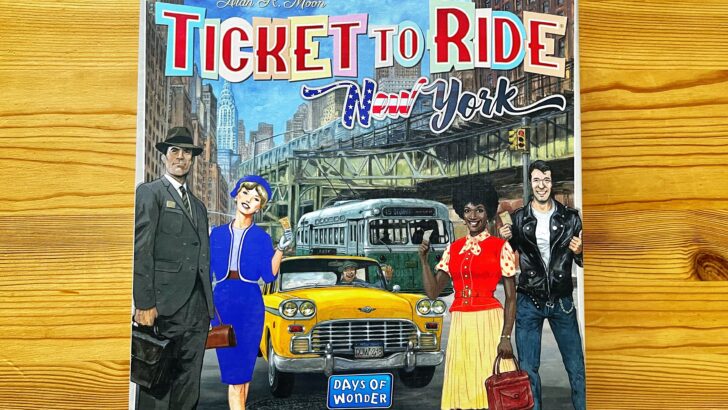Nearly 20 years after its release, Ticket to Ride is still one of the most popular gateway games in modern board gaming. New York, the first of the smaller, faster-playing versions of the original game, boasts the full Ticket to Ride experience in only 15 minutes.
But is it really? Read our Ticket to Ride: New York review to find out.
Contents
Ticket to Ride: New York Overview
In Ticket to Ride: New York, 2 to 4 players create routes for their colored Taxis to travel all over New York City.
You’ll score points for the routes you’ve claimed, the locations you’ve visited, and for connecting your routes to tourist attractions.
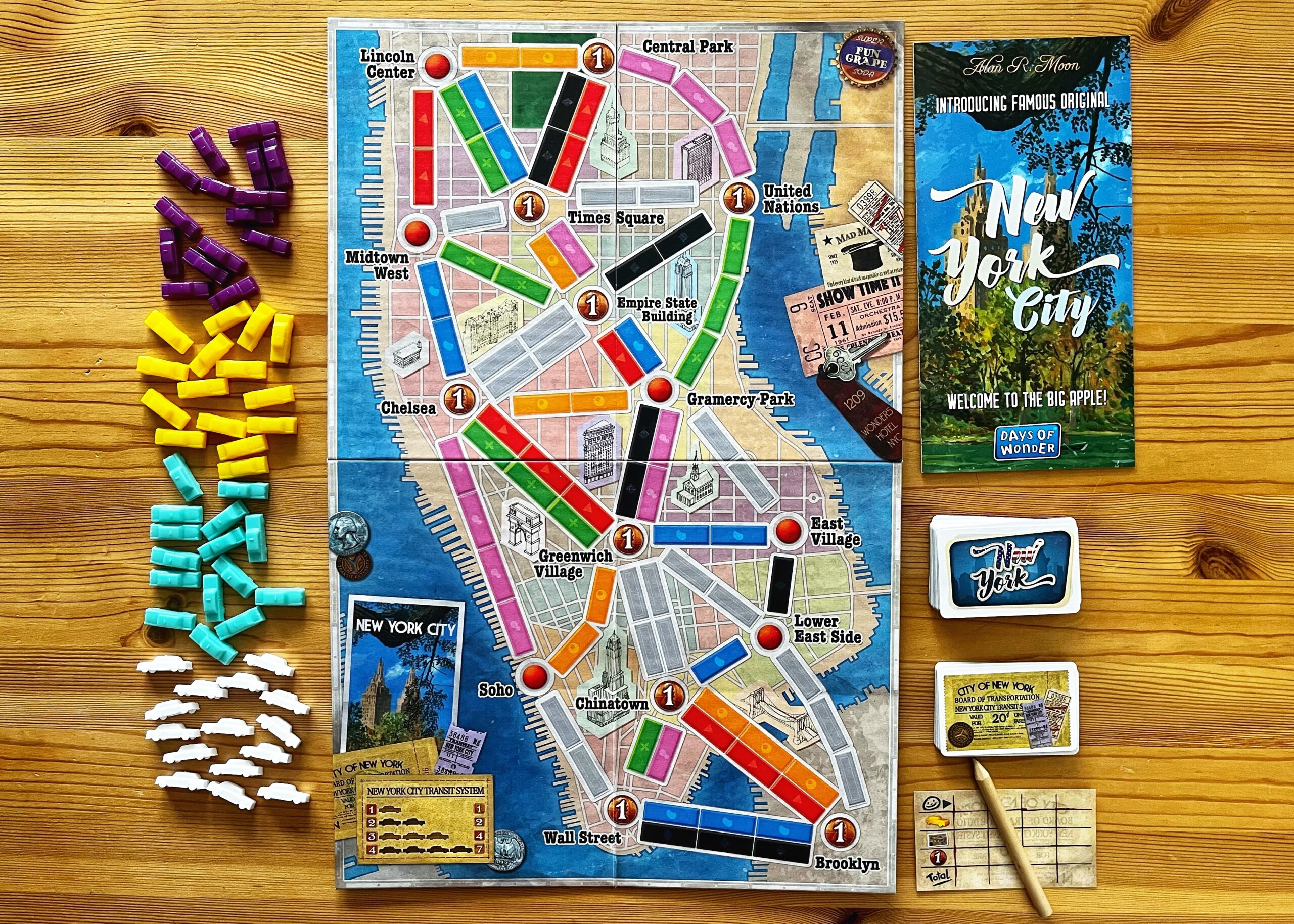
The components in Ticket to Ride: New York.
How to Play Ticket to Ride: New York
Setup
To begin, the map of New York is laid out on the table and each player selects a set of 15 Taxis in the color of their choice.
Taxis are players’ means of claiming routes and connecting locations and tourist attractions.
The 44 Transportation cards are shuffled, then each player is dealt a hand of 3 cards. Next, deal 5 Transportation cards faceup by the board and place the remaining cards facedown in a draw pile.
The faceup cards form a display from which players may draw cards on their turn.
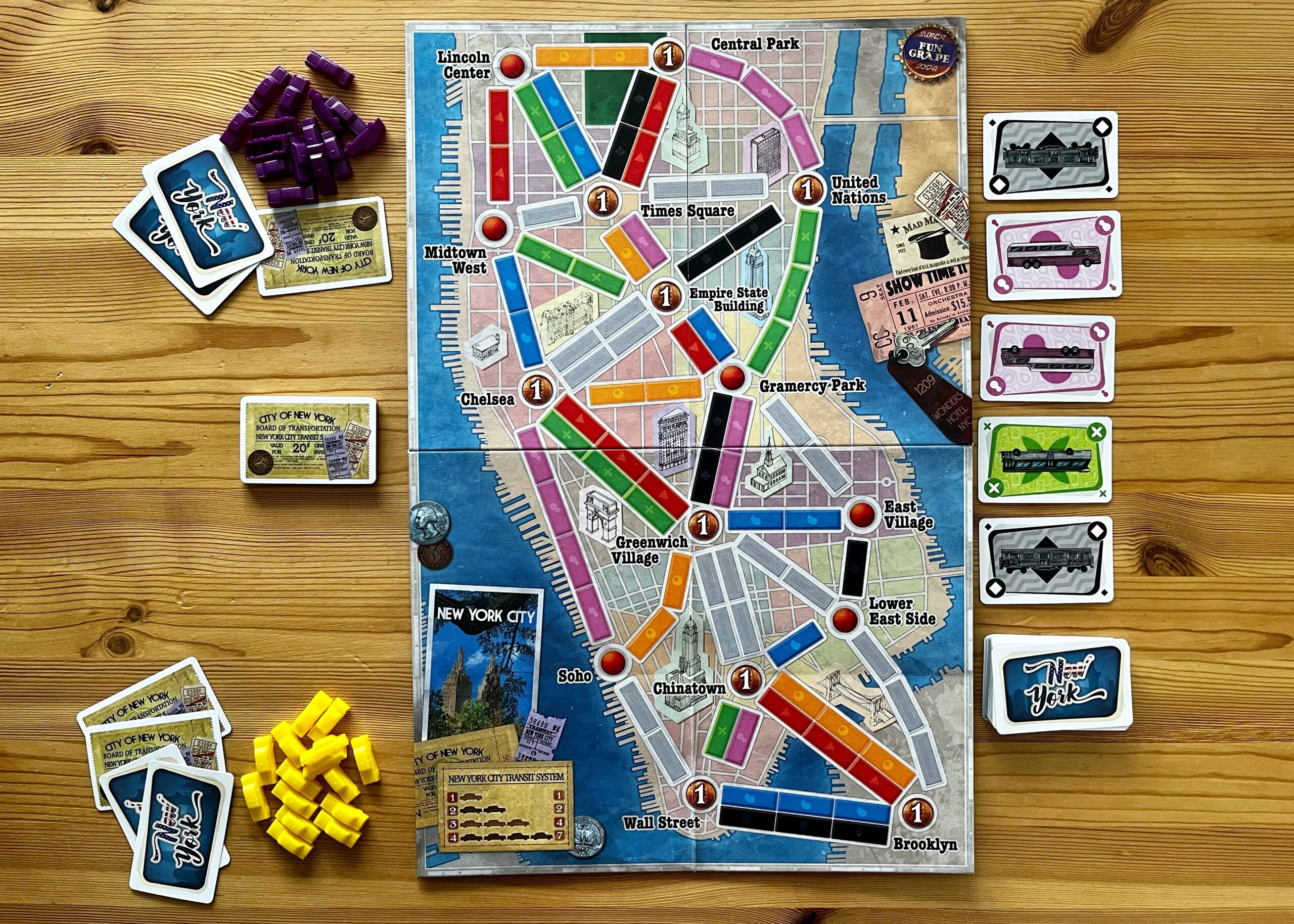
A game of Ticket to Ride: New York set up for 2 players.
Lastly, shuffle the 18 Destination Ticket cards, then each player draws 2 and chooses which to keep. You must keep at least 1, but you may decide to keep both if you’d like.
These cards represent the locations on the map that a player is trying to connect through a continuous path of Taxi routes of their color.
Destination Ticket cards are kept secret until they’re scored; you earn the indicated number of points if you have connected the 2 locations depicted on the card at the end of the game — but you lose those points if you don’t.
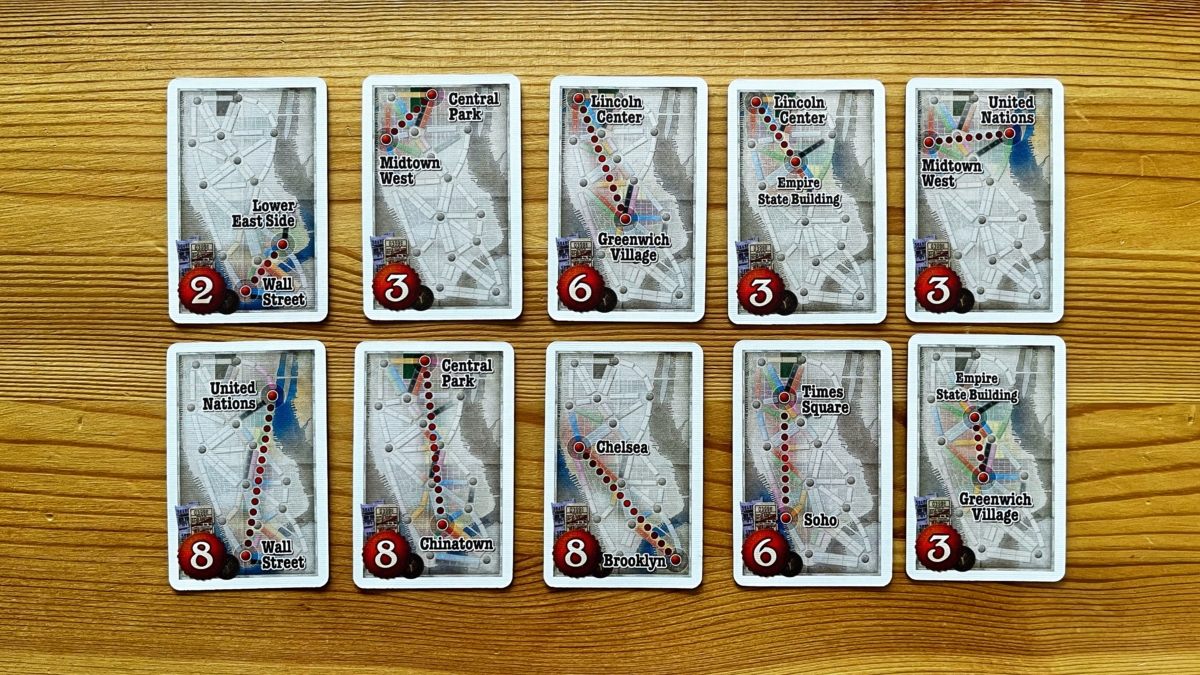
Some of the Destination Ticket cards.
Player Turn
Players take turns in clockwise order performing 1 action until the end of the game is triggered. On your turn, you may only do 1 of the following actions:
- Draw Transportation cards.
- Claim a route.
- Draw Destination Ticket cards.
Draw Transportation Cards
As an action, you can draw 2 Transportation cards from the faceup display or the facedown draw pile. Transportation cards come in 7 different colors — blue, green, black, pink, red, orange, and multi-color.
(For players who have trouble differentiating colors, each color is also represented by a symbol on both the cards and the routes on the map board.)
To claim routes on the map, you’ll need to collect Transportation cards that match the color of the route you’re aiming for.
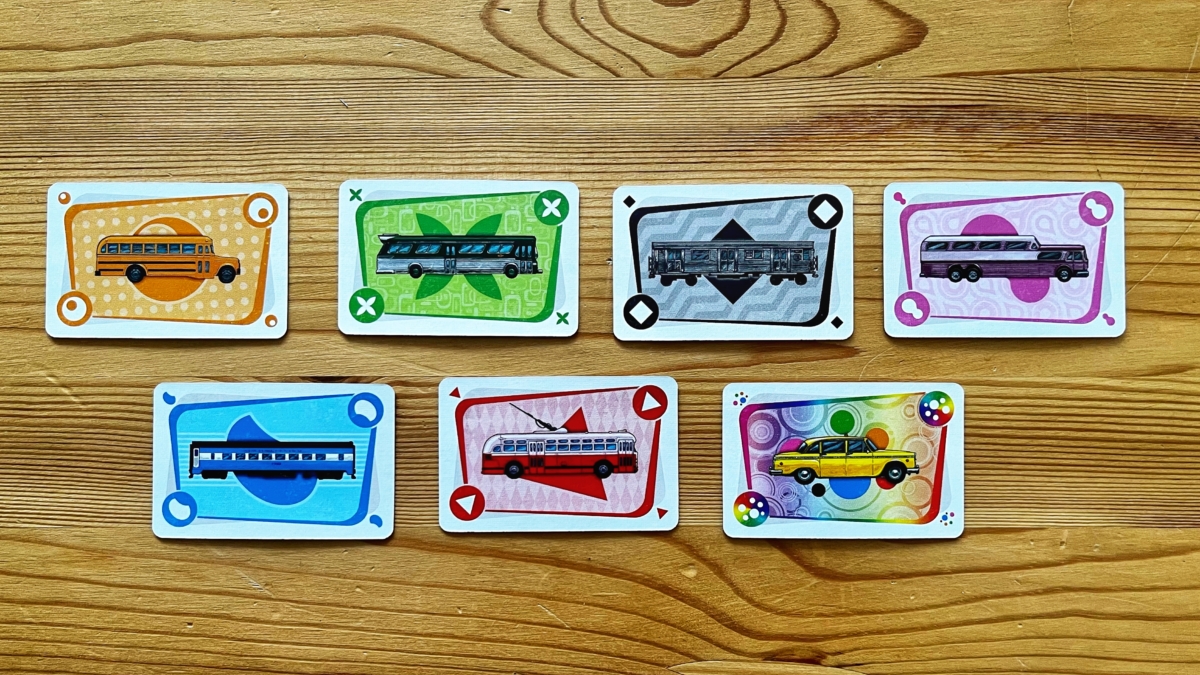
The 7 kinds of Transportation cards.
Claim a Route
The other action you may perform on your turn is to claim 1 available route. The New York map board is divided into many colored routes that connect 2 locations to each other.
To claim one of these routes, you must discard Transportation cards from your hand that match the color of the route you’d like to claim.
The number of cards you must discard depends on how many spaces there are in that route.
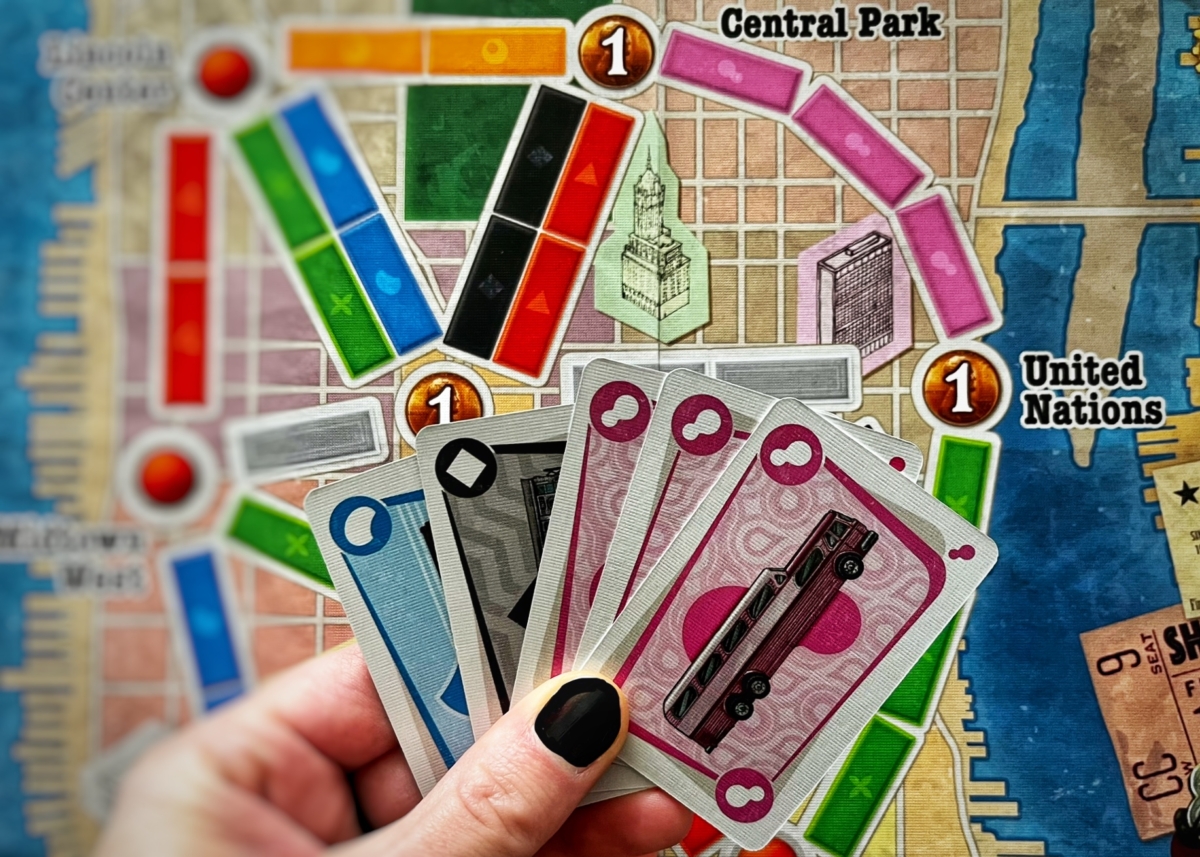
To claim the pink route from Central Park to United Nations, you have to discard 3 pink Transportation cards from your hand.
However, there are 8 multi-colored Transportation cards that can be used as a wild to replace a Transportation card when claiming a route — and you may use as many as you like/need.
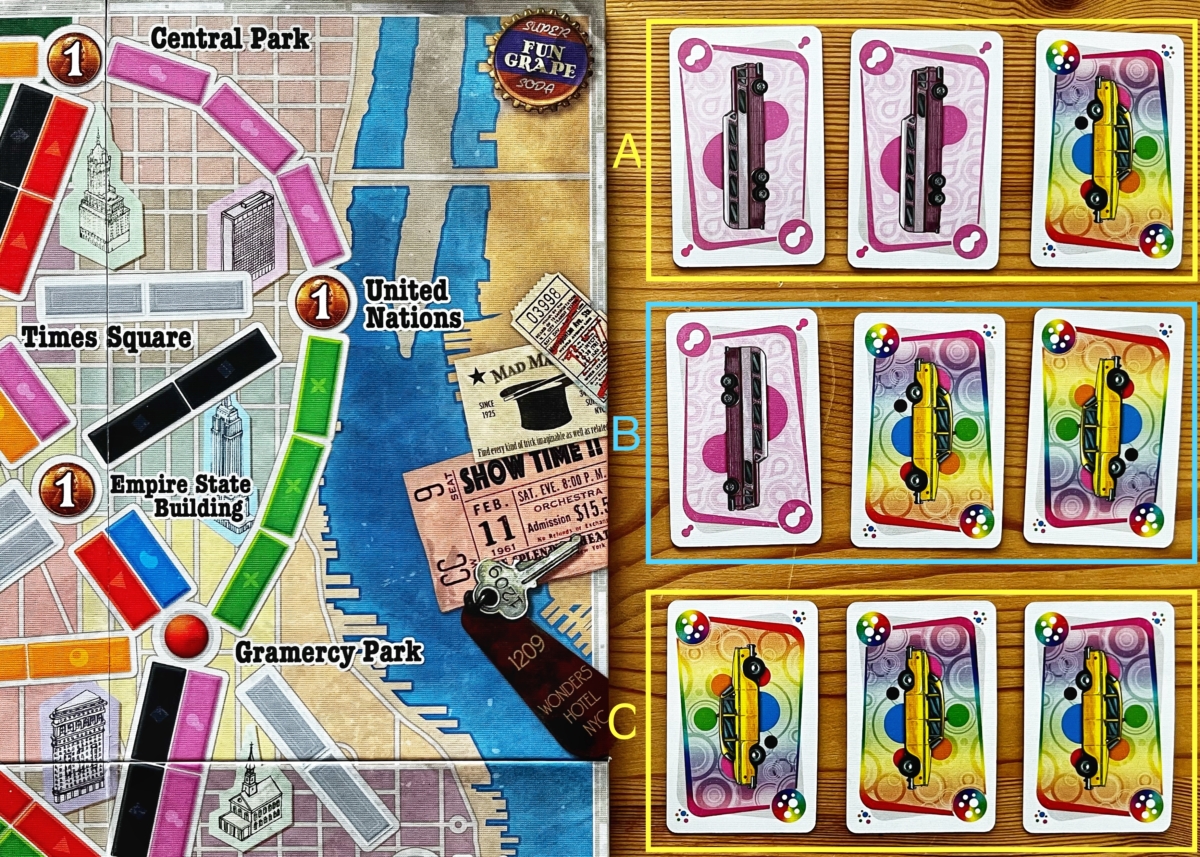
To claim the route from Central Park to United Nations, you could discard Transportation cards in any of the pictured options (A, B, or C) instead of 3 pink cards.
Some routes on the board are gray, for which no matching-colored Transportation cards exist.
A player can decide which color of Transportation card they use to claim such a route, but the cards they use must be of a single color.
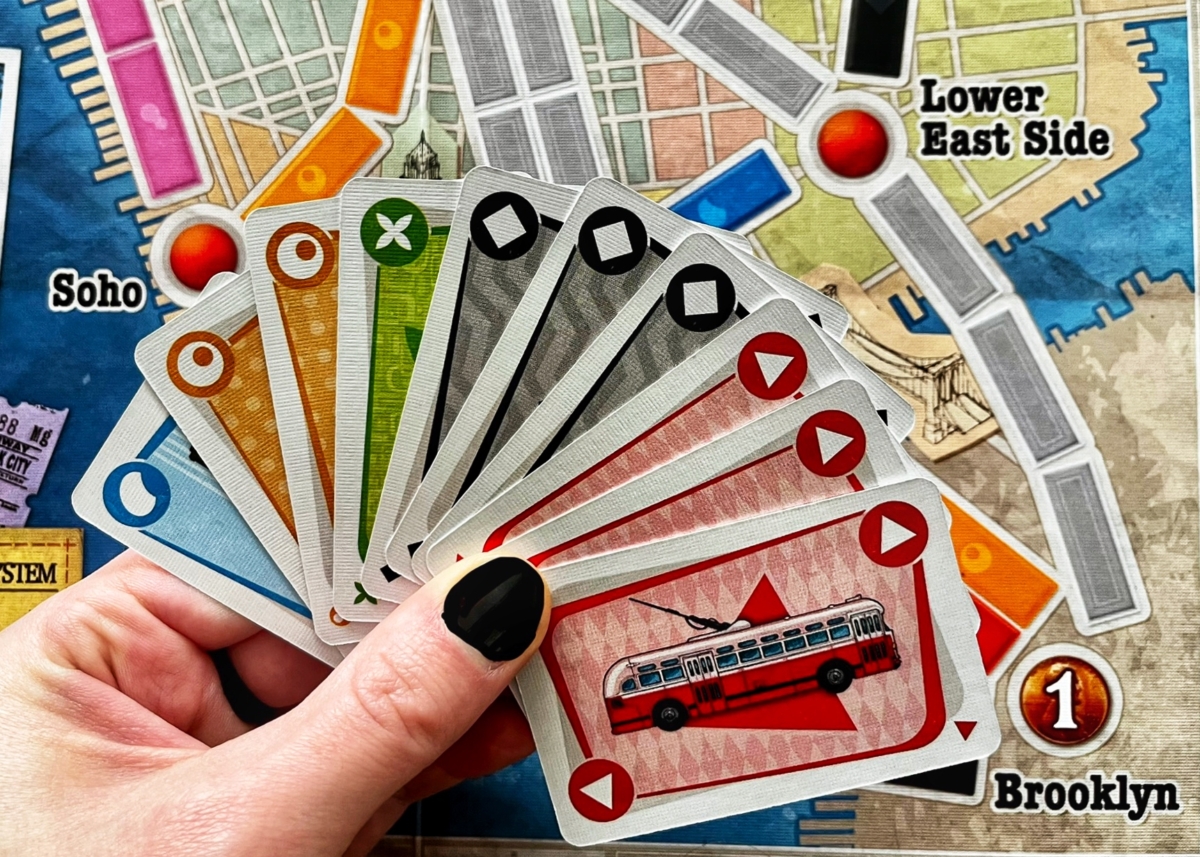
When you claim a route, place a Taxi in your color on each space of that route. This is now yours, and no other player may claim the route you just did.
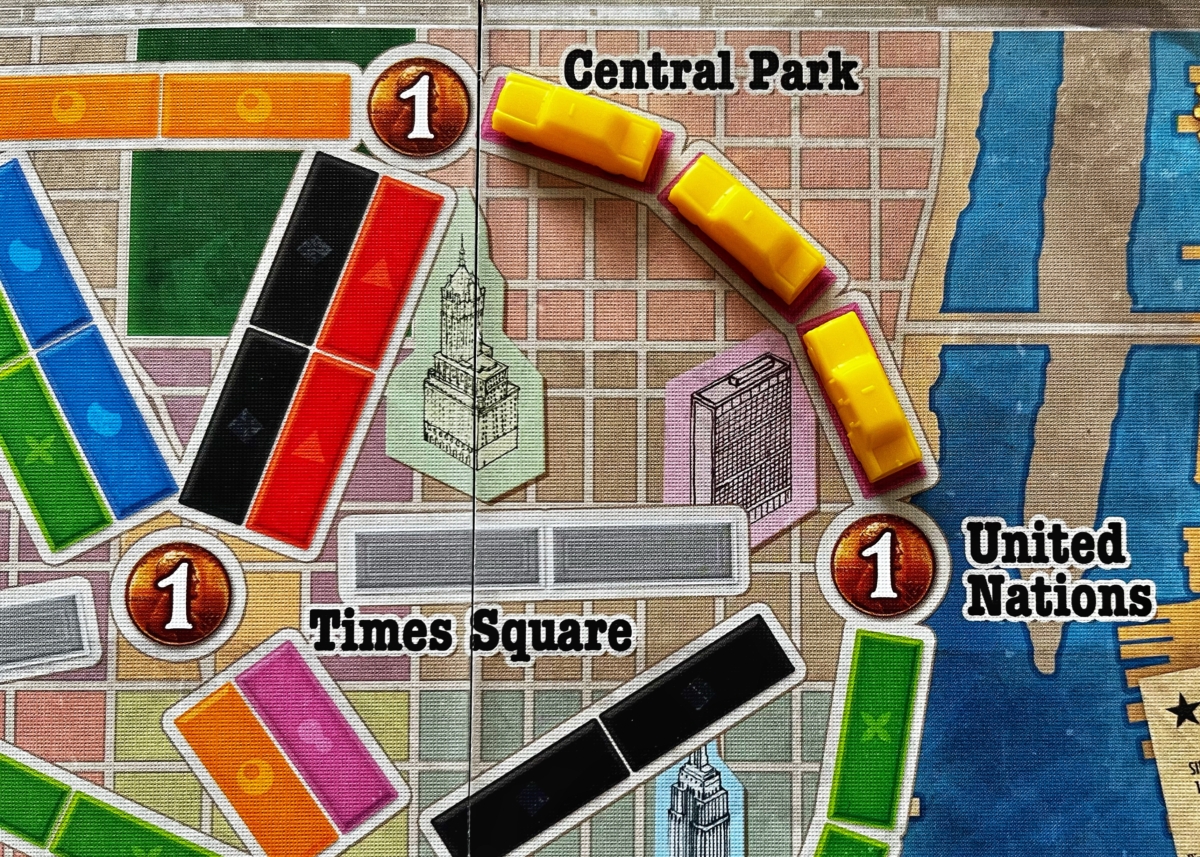
This is what the board would look like after you claimed the route from Central Park to United Nations.
Some locations on the board are connected by double routes.
A player cannot claim both routes of a double route — and in a 2-player game, once 1 double route has been claimed, the other is no longer available.
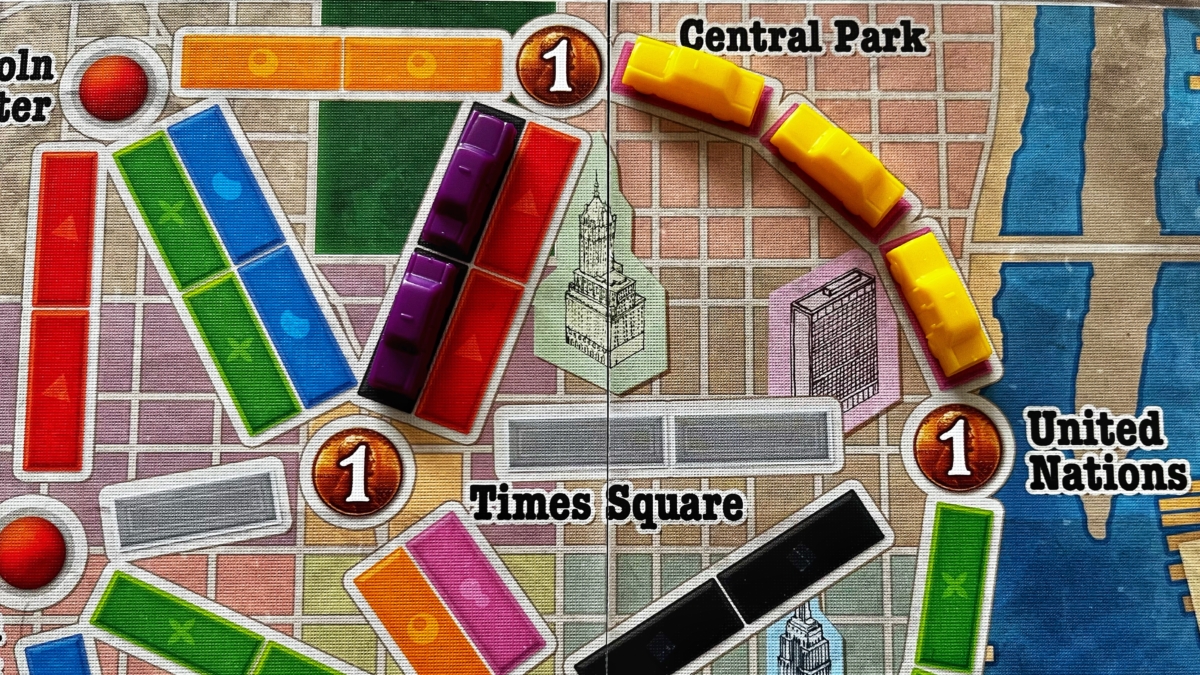
In this 2-player game, the purple player claimed the black route from Central Park to Times Square. This means the other red route connecting these locations is no longer in play.
Draw Destination Ticket Cards
This last action option allows you to draw more Destination Ticket cards to try to complete and score by the end of the game.
When you take this action, draw the top 2 Destination Ticket cards from the facedown draw pile and choose which to keep. Like in setup, you must keep at least 1, but you may hang on to both.
Once you have chosen a Destination Ticket card, there is no way for you to discard it during the game — so be sure to choose wisely; otherwise, it could cost you points during final scoring.
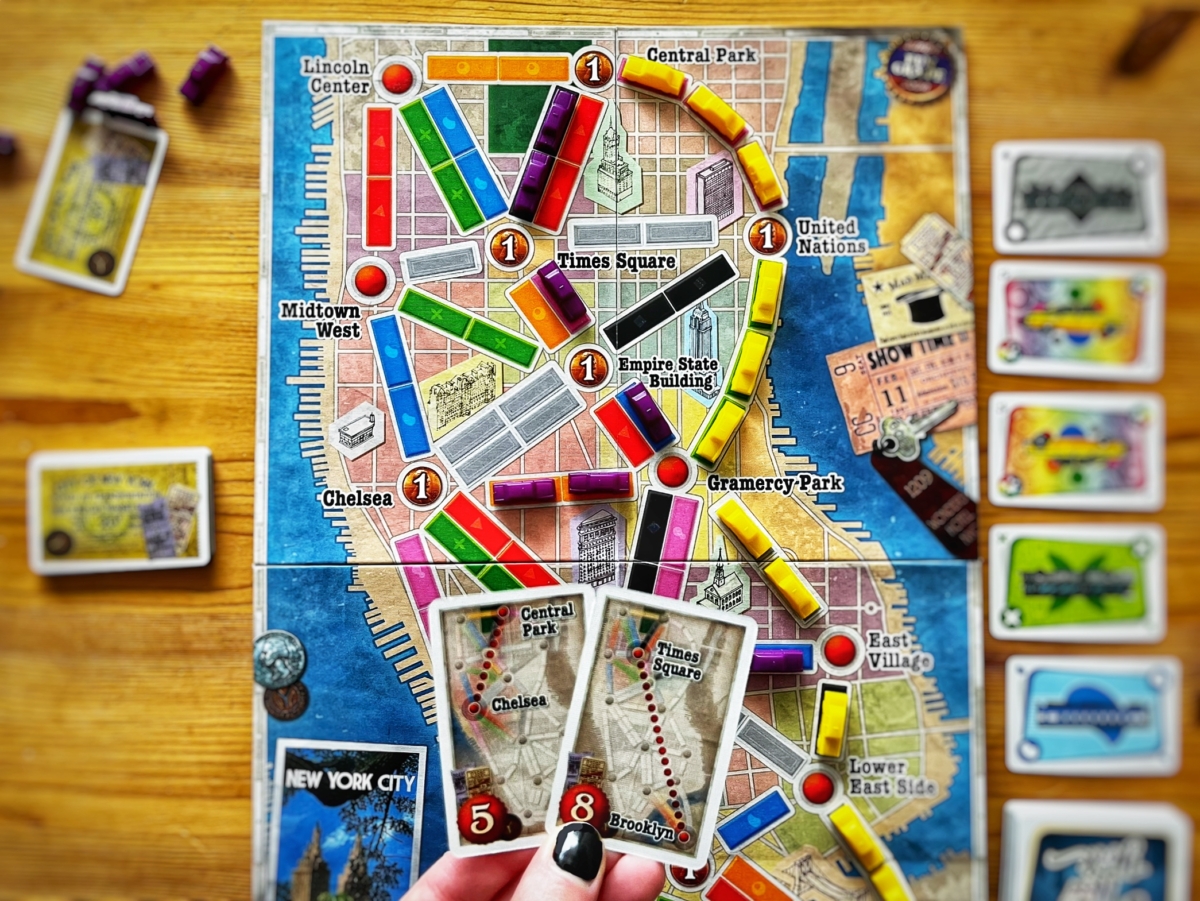
The purple player has drawn 2 Destination Ticket cards on their turn. They chose to keep both, especially since they already happened to have connected the locations on one of them (Central Park to Chelsea for 5 points).
End-game Trigger
The end of the game is triggered when a player has 2 or fewer Taxis left in their supply.
Each player — including the one who triggered the end-game — gets 1 more turn to complete an action. Then, the final scoring occurs.
Scoring
Using the Scorepad to keep track of points, players score for:
- Each route they claimed during the game (according to the scoring table printed in the bottom left corner of the map board).
- Their Destination Tickets, earning the points shown on the card if they connected the 2 locations through a continuous path of their Taxis or losing points if they did not.
- Each tourist attraction is connected to routes they claimed (1 point per connected attraction).
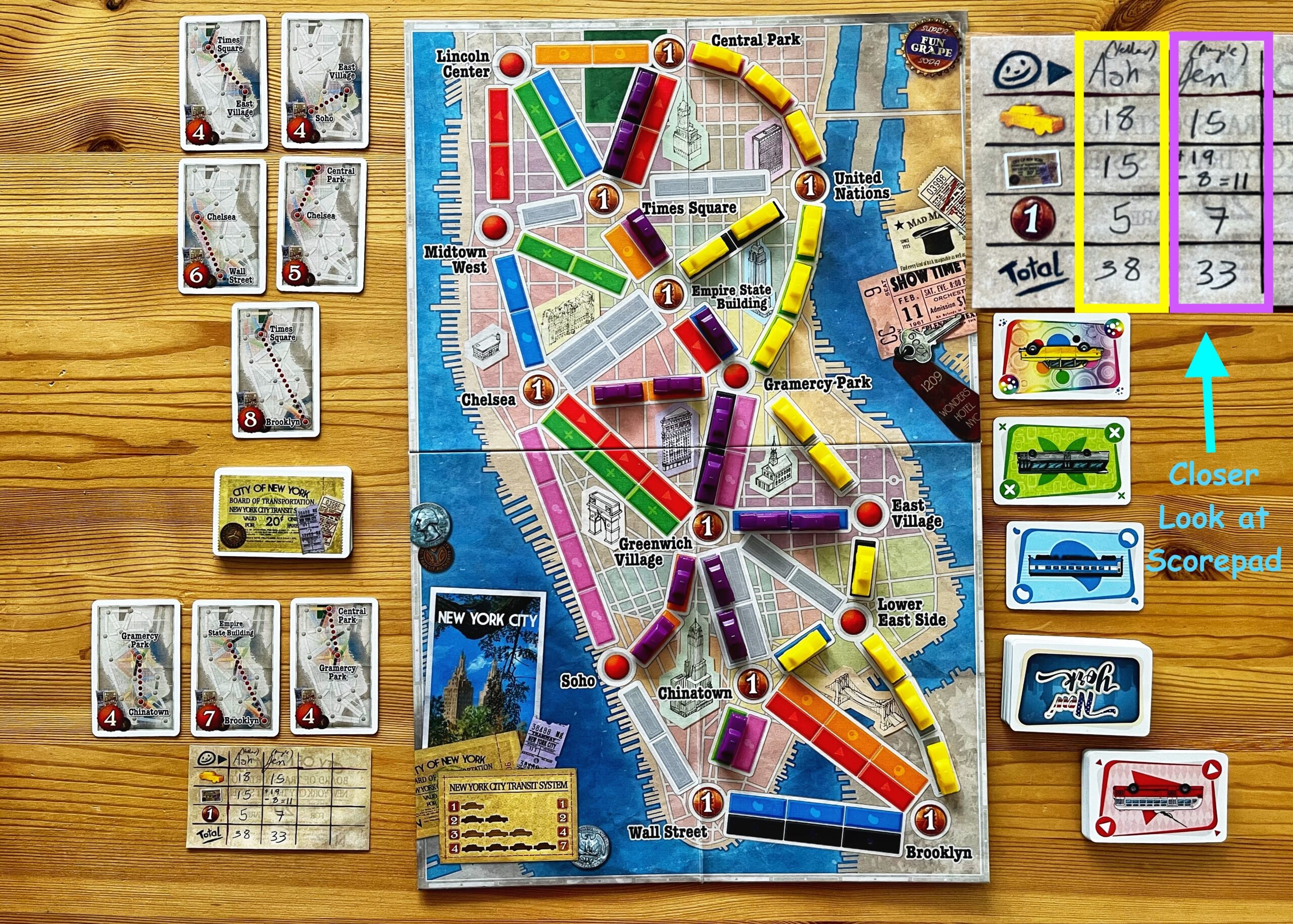
The final scoring for a 2-player game.
Ticket to Ride: New York Review
The first modern board game I played was Ticket to Ride — and while the experience itself didn’t leave me feeling enamored of the game, something about Ticket to Ride’s gameplay resonated with me.
After giving it a second chance, it soon became my most-played game and one of my favorites.
When Ticket to Ride: New York was announced in 2018 and promised to be a 15-minute express version of its predecessor, I’ll admit I was skeptical. How could they possibly distill the complete Ticket to Ride experience into such a quick game?
I should have known better than to doubt because that’s exactly what designer Alan R. Moon did.
Ticket to Ride: New York is an excellent tapered-down version of Ticket to Ride. Its rules and gameplay are simple, but it works well for those times when you want a route-building game that won’t burn your brain or take too long.
Ticket to Ride: New York is also even easier to get into than Ticket to Ride. Moreover, because NewYork is an express version, the stakes — and the scores — aren’t as high, so having your route cut off or being blocked out of a location is not nearly as detrimental to your game.
The trickiest part for me about Ticket to Ride: New York compared to the original game is wrapping my head around its strategy.
In Ticket to Ride, I’m used to completing a long, continuous route network that hits key locations to score big points at the end of the game. In Ticket to Ride: New York, this strategy doesn’t come into play — and usually, when I try to implement it, I lose.
Having a single long route network doesn’t matter; branching routes usually work more in your favor. Drawing Destination Tickets, too, are more difficult to complete, given how few trains you have and how quickly the game plays out.
These aren’t complaints against the game or its design; simply, it takes some adjusting before you can feel the same level of satisfaction and accomplishment in New York as you would in Ticket to Ride.
Final Thoughts
Ticket to Ride: New York captures the Ticket to Ride essence well in a quick-playing, easy-to-learn gameplay experience.
It by no means will replace Ticket to Ride — on my shelf or in my heart — but I’m happy that it exists, so I can get my route-building train game fix no matter the occasion or players around the table.
You might also be interested in the following:

